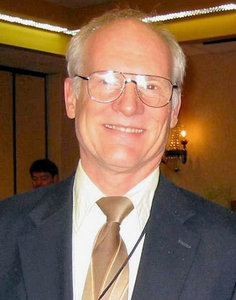The father of the Automatic Packet Reporting System (APRS), Bob Bruninga, WB4APR, of Glen Burnie, Maryland, died on February 7. An ARRL Life Member, Bruninga was 73. According to his daughter, Bruninga succumbed to cancer and the effects of COVID-19. Bruninga had announced his cancer diagnosis in 2020. Over the years,  Bruninga readily shared his broad knowledge and experience in APRS and other topics in the amateur radio and electronics fields.
Bruninga readily shared his broad knowledge and experience in APRS and other topics in the amateur radio and electronics fields.
While best known for APRS, Bruninga, a retired US Naval Academy senior research engineer, had an abiding interest in alternative power sources, such as solar power. In 2018, he authored Energy Choices for the Radio Amateur, published by ARRL, which explores developing changes in the area of power and energy and examines the choices radio amateurs and everyone else can make regarding home solar power, heat pumps, and hybrid and electric vehicles. Bruninga drove an all-electric car and had experimented with a variety of electric-powered vehicles over the years.
What became APRS had its origins in 1982, when Bruninga wrote his first data map program that plotted the positions of US Navy ships for the Apple II platform. A couple of years later, he developed what he called the Connectionless Emergency Traffic System (CETS) on the VIC-20 and C-64 platforms for digital packet communications to support an endurance race. The program was ported to the IBM PC platform in 1988 and was renamed APRS in 1992. The recognized  North American APRS frequency is 144.39 MHz and APRS is linked globally via the internet. Bruninga founded the Appalachian Trail Golden Packet event, which fields APRS nodes from Stone Mountain in Georgia to Mount Katahdin in Maine each July.
North American APRS frequency is 144.39 MHz and APRS is linked globally via the internet. Bruninga founded the Appalachian Trail Golden Packet event, which fields APRS nodes from Stone Mountain in Georgia to Mount Katahdin in Maine each July.
ARRL Contributing Editor Ward Silver, N0AX, remembered Bruninga this way: "Bob kept pushing APRS beyond its origins as a position reporting system. He developed and helped implement numerous other uses of APRS in support of what has become the 'Ham Radio of Things,' with great potential for future amateur radio applications. Bob's far-reaching vision and imagination were as good as it gets."
.jpg) Bruninga mentored US Naval Academy midshipmen in building and launching amateur radio satellites and CubeSats, beginning with PCSat in 2001. PCSat was the first satellite to report its precise position directly to users via its onboard GPS module. Subsequent USNA spacecraft included PSK-31 capability (HF to UHF) and other innovations.
Bruninga mentored US Naval Academy midshipmen in building and launching amateur radio satellites and CubeSats, beginning with PCSat in 2001. PCSat was the first satellite to report its precise position directly to users via its onboard GPS module. Subsequent USNA spacecraft included PSK-31 capability (HF to UHF) and other innovations.
Amateur Radio on the International Space Station (ARISS) ARRL liaison Rosalie White, K1STO, recalled that Bruninga attended many ARISS-International meetings and contributed "enormously" to ARISS APRS activities, leading a team in developing protocols and software for rapid message exchange via a packet "Robot."
Last year, ARRL CEO David Minster, NA2AA, on behalf of ARRL, honored Bruninga with a brick in ARRL's Diamond Club Terrace at ARRL Headquarters.